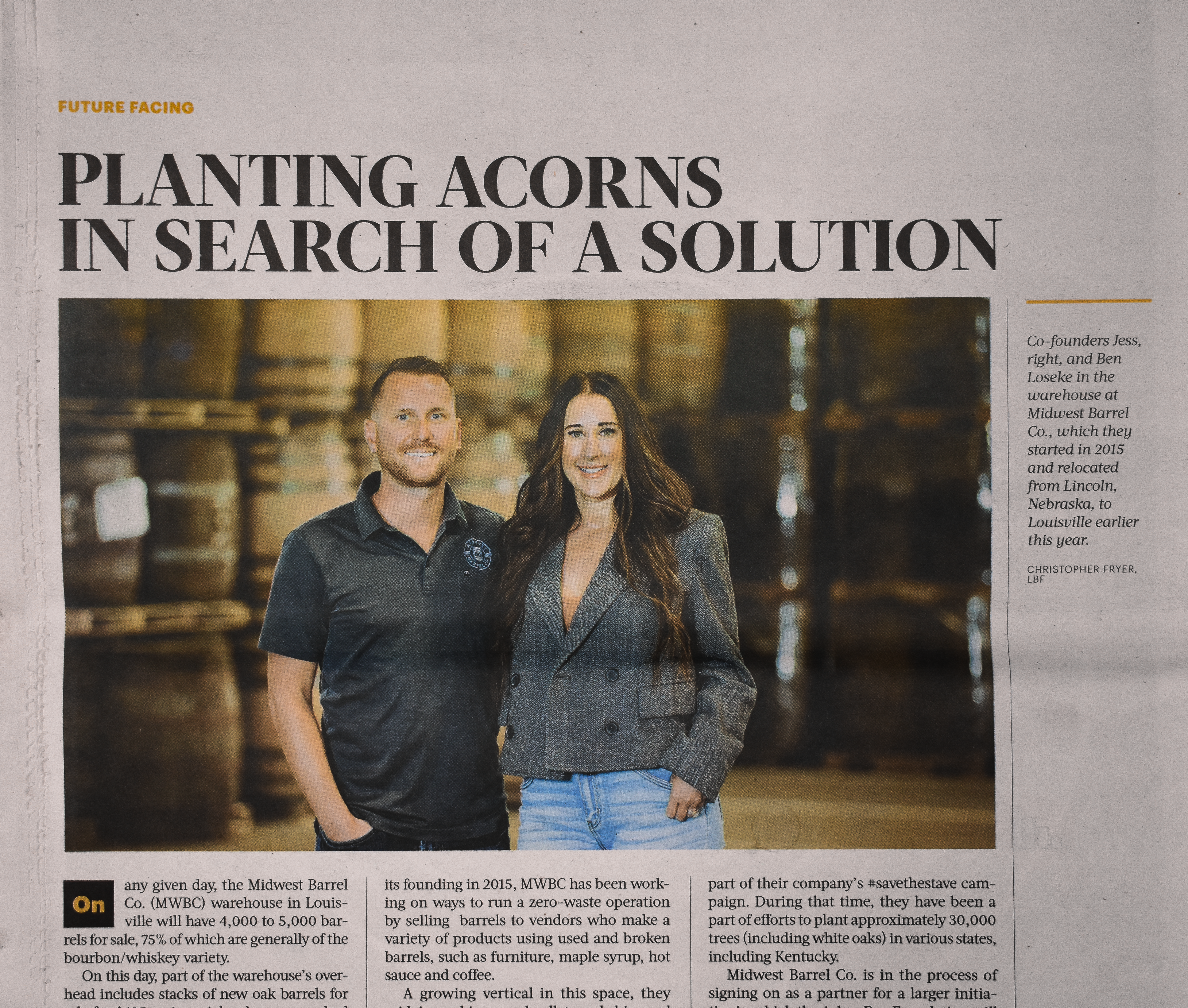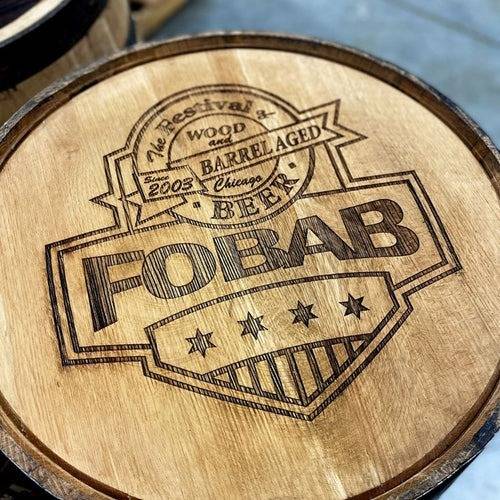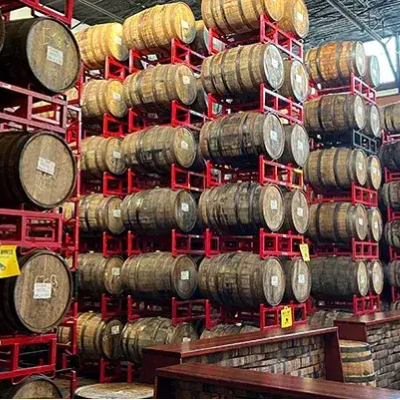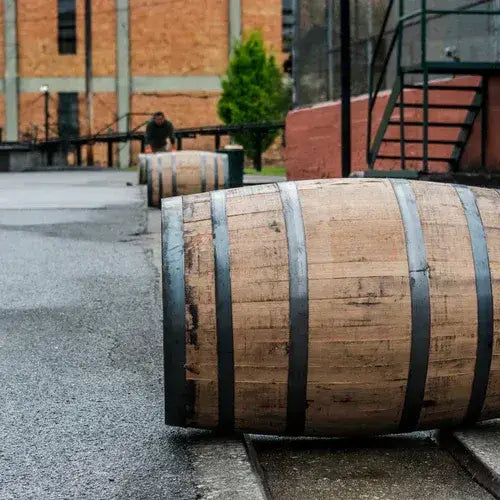What is a wet whiskey barrel?
July 20th, 2021

Ibelieve getting to the point quickly is a virtue. So if you’re here because you just purchased a used whiskey barrel that you intend to fill with a beverage, but there isn’t any remaining liquid from what it aged before in there and so you’re concerned, here’s what you need to know:
Your wet barrel doesn’t have liquid in it anymore because oftentimes the liquid (alcohol) evaporates from the vessel before the barrel reaches its next aging destination/second filling location.
But don’t worry, your barrel can still be a “wet barrel” even if there isn’t visible liquid left in the barrel. You can tell if your barrel is still considered wet – as in, if the barrel staves are still saturated with alcohol – with a few easy steps listed near the bottom of this article.
In a nutshell.
If the above is everything you’re interested in knowing, the bulk of this article isn’t super necessary – but it’s definitely relevant if you plan on barrel-aging frequently. Check it out.
“I just purchased a wet barrel
but there’s nothing in it – what gives?”
If I had a dollar for every time I got asked this, I’d be something like two hundred dollars richer. Over the course of the 5 years this company has been around, that’s a lot of times this particular question has come up.
So let’s start from the top:
WET VS. DRY BARRELS
A wet barrel is an oak barrel that has recently held, for an extended period of time, either wine, whiskey/bourbon, or some other spirit.
The term “fresh-dumped, once-used” describes most of the barrels Midwest Barrel Co. sells to beverage producers because each barrel has only ever been used once to hold one type of alcohol. These barrels have just been emptied of their original spirited contents, so the barrel staves are still saturated with the alcohol. These barrels will still be water-tight for the most part and would only ever need minimal swelling around the head-stave joint (a.k.a the chime) or other loose areas by the time you’ve received your barrel for filling. (Learn about the anatomy of a barrel here.)

It’s important to note the “once-used” part. We do sell fresh-dumped barrels that have been used more than once, such as maple syrup barrels that first aged bourbon. They’re still freshly dumped and watertight, but they’ll have more complex flavor profiles and overall less oakiness.
On the other hand, a dry barrel is an oak barrel that has never held anything in it previously, or one that is so old that the liquid it once previously contained has completely evaporated – not just from inside the barrel, but from the oak staves themselves. These dry, once-used barrels are no longer water-tight as their staves would have shrunk with the evaporating liquid. Just like a new barrel that has never held liquid in it, these barrels would have to be swelled in order to be watertight, which is why we do not sell dried out full-size barrels to be used for barrel-aging. We always downgrade our inventory from fresh-dumped to furniture grade when they get too old. (Side story: I actually used to water barrels in my backyard with a sprinkler to tighten them back up – turns out people who want barrels for decor and furniture like tight barrels too!)

Pretty straightforward, right? So in understanding the quality of a wet barrel, you have to understand the time it spends between being dumped at the distillery and arriving at your door to be refilled.
A WET BARREL’S LIFE AT MWBC
When our warehouse receives the once-used barrels from the distillery, it’s almost always within a few days after they’ve been dumped. We check these barrels for tight rings, any cracks in the wood, a solid structure, and give them a once-over for evidence of any leaks. We then select a few barrels from each shipment as test samples – we pull out the bung and inspect the inside of the barrels, which is usually when we see free liquid on the inside of the barrel.

There is rarely a significant amount of liquid – as in more than a bottle – left in these barrels. (Because why would any distillery leave that much in there?) This free liquid will likely evaporate over the next week or so, which is why we recommend commercial brewers to sign up for our inventory update emailing list so they can get notifications right when we get new shipments of their favorite barrel brands and exclusive specialty barrels.
If the sample is approved, we then store the barrels in our warehouse for up to three weeks as a fresh-dumped wet barrel. If it doesn’t sell by the three week mark, it’s then downgraded to a furniture grade barrel, broken down into parts, or made into our smoking wood chunks and chips. Reuse and recycle, ya know?
In summary, you’re probably not going to see free liquid in your wet barrels 9 times out of 10 – and that’s okay! All the flavor profiles you’re trying to achieve are still locked away in the barrel’s porous oak and can be easily drawn out with some good old-fashioned patience.
“How do I know if my wet barrel is high-quality?”
Fair question. First off, you buy from us. We built our business by first doing one thing – selling great barrels – so we do it right. However, if you want to assess your wet barrel for dryness like our team does, here’s what you need to do:
HOW TO ASSESS A WET BARREL
FOR DRYNESS:
1. Check for loose bands
Wet barrels have extremely tight bands, as its staves are still swollen with liquid inside the wood.
2. Check for leaks
Wet barrels are swollen and still water-tight, so you should have very few spots where liquid is escaping. (These leaking areas will be darker than the rest of the wood.) Cracks are perfectly normal, and these barrels get an extra inspection and are pressure checked prior to shipping.
3. Check the smell/interior shine
Wet barrels are going to have a strong, pleasant aroma (of oak and the spirit they contained) and will likely have a little bit of a shine on the inside when you shine a light through the bunghole.

In a perfect world, this would be the end of this article – but it isn’t. So if you do have a barrel on your hands that doesn’t pass any of these tests, here’s what you need to do:
WHAT TO DO IF YOUR
WET BARREL IS DRY:
1. Consult an expert
If you purchased a wet barrel from us, our customer service team is always here to help you make the most out of it. From expert barrel-aging brewers to experts on barrels themselves, our team can help you assess what your next step should be. We may tell you to head swell your barrel or use a little barrel wax to fill up a crack if it isn’t too badly dried out – Questions? Reach out, and we can help!
2. Get a new one
Didn’t fill your barrels for a month or so after you received them? Hate to break it to you, dude, but the ship has sailed. Just like most brewing ingredients, wet barrels have an expiration date. If you fall into this category, read up on how to take care of your barrel here before investing in a new one.
3. Steam or swell your barrel
In our opinion, this option should be your last resort. We understand that buying a whole new set of wet barrels can be costly, but even still, unless it’s a wine barrel we don’t recommend steaming or filling your barrel with hot water to re-swell it. The water will dilute the flavors of the oak and the original spirit, so you’re not going to get the same profiles you were originally paying for. If you are considering swelling your barrel, check out our best recommendations for doing so. As for wine barrels, because they’re not dumped as often, they’re often drier than a spirit barrel and so it’s a common practice to steam wine barrels to rehydrate them.

Another great way to repurpose your dry barrel is to sell it to a local woodworker. Reclaimed wood furniture pieces are a hot commodity as our culture shifts more toward supporting local creators and eco-friendly alternatives, and while you probably won’t get all of your money back, it’s better than taking a complete loss and trashing an opportunity to do some good for the earth. You can also use it for a variety of your own simple DIY projects, such as a rain barrel, garden planter, or whiskey barrel end table. (Check out our Pinterest – we’ve got tons of ideas.)
Well, this about sums it up. Got any more barrel questions for us? Shoot us an email.
Cheers,
Ben Loseke

ABOUT THE AUTHOR:
Ben Loseke
Ph.D., and Founder of Midwest Barrel Co. Barrel expert. Plant doctor. American picker. Only known allergies: spicy food and meetings.






